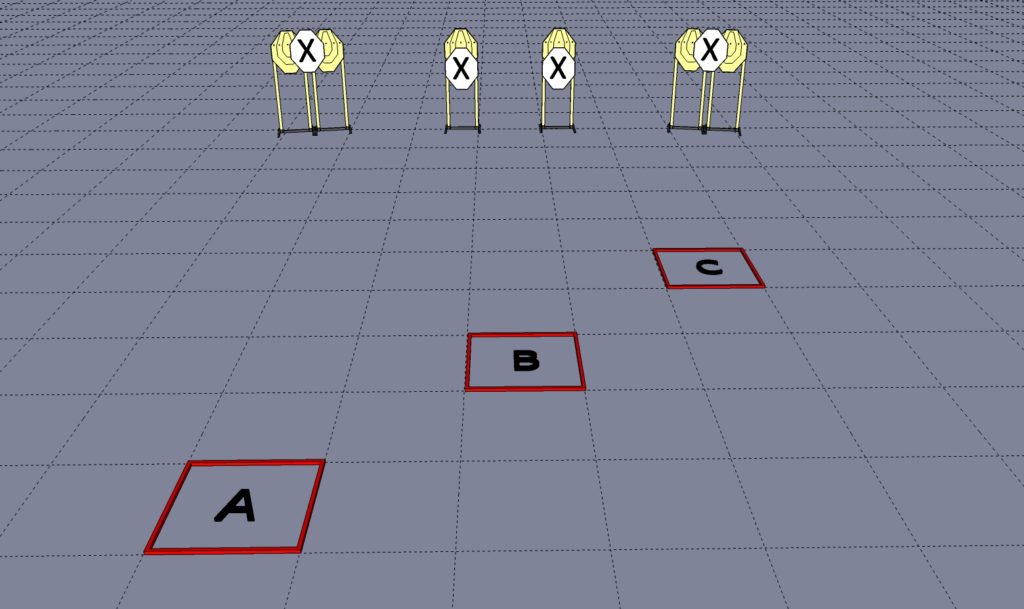When competitors follow the stage procedure, everyone is happy because no extra penalties are applied. But when a competitor does an action contrary to the stage procedure, then range officials need to determine how many penalties apply. Let’s look at this Question of the Month and the answer.

Stage Procedure: String 1 – On the audible start signal, engage each target with only one round each, freestyle from box A, perform a mandatory reload, and engage each target with only one round each, strong hand only from box B. String 2 – On the audible start signal, engage each target with only one round each, freestyle from box B, perform a mandatory reload, and engage each target with only one round each, weak hand only from box C.
What happened: Virginia Count scoring. String 1 was shot correctly. For String 2, the competitor failed to move to box C but followed all other stage procedures. What is the penalty?
Most stages have a procedure of “engage targets from within the shooting area.” Not much to violate there. But stages like standard exercises and speed shoots can have some specific stage procedures. On the stage in this question, the competitor was supposed to move between box B and C on string 2 and failed to do so. So which rule applies and how many penalties?
First, let’s figure out which procedural rule applies. The competitor performed the mandatory reload as required and shot weak hand only as required so no penalties per 10.2.4 or 10.2.8, respectively. In this case, the competitor failed to comply with the procedure in the WSB and move between boxes, so 10.2.2 applies. And I am pretty sure all of you knew that already. But 10.2.2 talks about how it is one penalty unless there is significant advantage and then it can be a per shot penalty. It looks like this is where the real debate is.
So what is significant advantage? We do have some examples in the definition listed in Appendix A3. You will see that being closer to a target, so the shot is easier, is one of the listed examples. In this instance, by not moving the competitor actually engaged the targets weak hand only from a distance that was further away. Which means that the competitor was at a disadvantage and as a result only one procedural per 10.2.2 applies.
I did see the internet discussions about how it was a significant advantage because the competitor saved time by not moving, but is that really an advantage? The reload and transition to the weak hand still had to occur and most competitors can do all that while moving in the same time it takes to do that standing still. And if you look at the examples listed in the definition of significant advantage, you will notice that all of them have to do with a better view of a target or more stable position. None of them talk about time saved.
We know that significant advantage is a discussion that is often had at matches and that sometimes folks don’t agree on what is significant or not. But all matches should apply penalties consistently for the whole match. For all discussions about significant advantage, we recommend talking to the Range Master of the match to ensure that significant advantage is being applied, or not applied, equally. Especially at local matches where the ROs move with the squads. Nothing is worse than finding out after the match that one squad gave per shot penalties and another gave a single penalty. When in doubt ask the RM!
Remember to vote in the current Question of the Month!